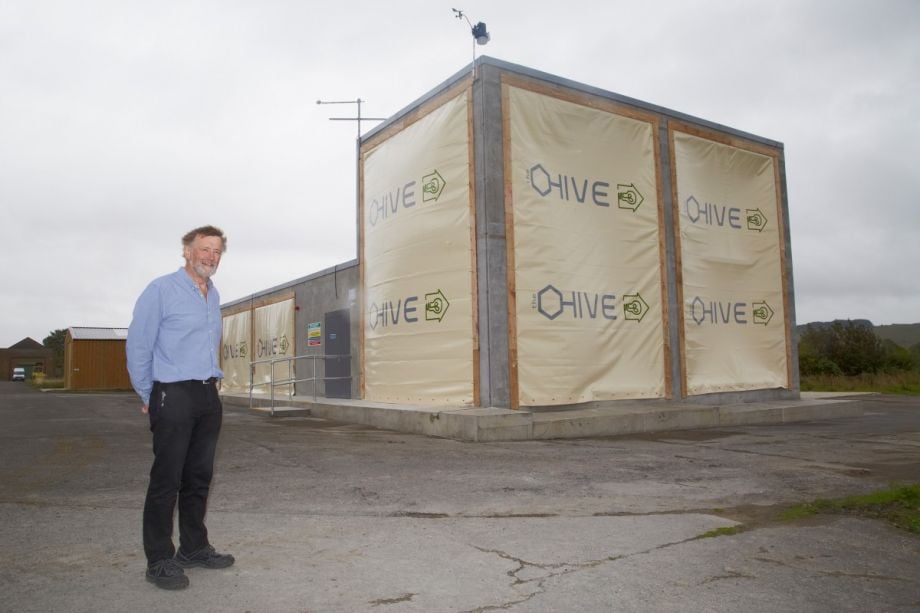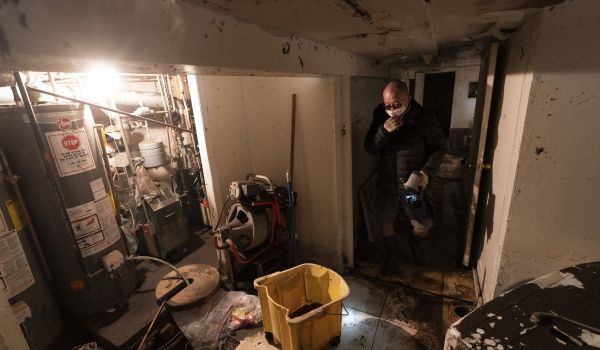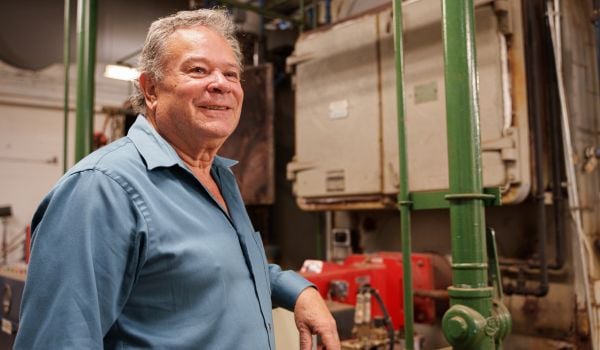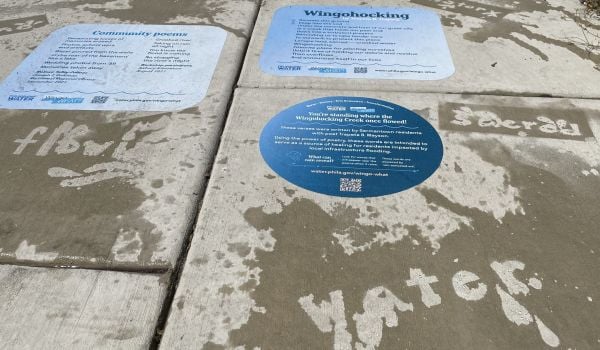Michael Lawrence, a low-carbon design expert at the University of Bath, knows something about brass tacks. He’s working on a paneling system that aims to equip walls with hardier and more energy-efficient insulation. His testing ground is the HIVE, a new facility for developing resilient construction methods at the university’s September-inaugurated Building Research Park. Lawrence, the HIVE’s principal investigator and the park’s director, says that the process of settling on a design, clearing its site (a former airfield) for new use and finally building the space took a little over a year.
The HIVE’s hygrothermal rooms (hygrothermics is the study of high temperatures and humidity) allow researchers to analyze how a wall’s integrity changes — right down to vapors. Diving into such details is integral to discovering resilient construction methods that don’t just fortify but can adjust for complex, changing weather cycles. When Lawrence is testing his paneling system, for example, there are sensors to detect and register the moisture and heat that seeps through.
Beyond the individual projects at HIVE, what’s piquing interest is the number of potential experiments that the facility can play host to: One building materials expert may be curious about how wind can distort materials during a hurricane, while another may be more interested in the whirlpool of a dust devil. Both could stage gusts from the “bladder” cell.
“I’ve had researchers approach me already and say, ‘Well, these [spaces] are ideal to work on acoustics.’ And that’s something I hadn’t thought of,” says Lawrence. “Even though I came up with some ideas, other researchers are coming up with other ideas. I think the key thing with the HIVE is the use of it is only limited by the imagination of the researchers who want to come and use it.”
In addition to the bladder cell for testing wind force and eight hygrothermal cells, there’s a deep, two-story room for testing the exteriors and interiors of facades and a flood cell to test storm-proofing techniques.
Lawrence says that researchers are “queueing up” to use the flood cell in particular. While recent years have seen advancements in wet proofing — flood resilience measures that allow water to flow in and out — wet techniques that eliminate all potential for water damage remain to be seen. This may be near to impossible, explains Lawrence, but what the flood cell welcomes is experimentation with how materials perform and finding the best capacity for each.
“It’s going to be so popular that we may have to convert one of the other cells into another flood cell,” says Lawrence.
There are at least seven projects on HIVE’s docket, a number that grows as more research groups reach out to Lawrence and his staff. Some include ameliorating interior air quality, building cooler spaces for archival storage, and testing the performance of “double skin facades” for HVAC purposes.
This July, a similar center for construction research opened at the Lawrence Berkeley National Laboratory. There, at the new FLEXLAB, developers can test their energy-efficiency tactics before they break ground. Lawrence says he visited the lab in Berkeley while doing research for what would become the HIVE, but notes that he and his colleagues’ work is somewhat different, as they are not architects with blueprints nearly finished, but academics fine-tuning new technologies.
The panels that Lawrence is working on are made from hemp and lime, a mixture most commonly marketed as “hempcrete.” This paste, Lawrence says, “has much better thermal and moisture-buffering properties” than concrete and, at one-eighth the weight, saves contractors on shipping costs. The panels, called HEMPSEC, would have a lot of features that are in demand at the moment: Ideally, they’d be carbon-capturing, pre-fabricated for quick installation and available at a more affordable price.
“Because this is using some innovative materials, we need to demonstrate the advantage of these materials over more traditional ones,” says Lawrence. “That’s what [this] program is all about doing.”

Cassie Owens is a regular contributor to Next City. Her writing has also appeared at CNN.com, Philadelphia City Paper and other publications.
Follow Cassie .(JavaScript must be enabled to view this email address)


















